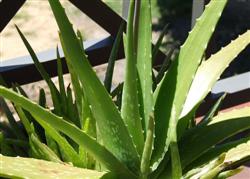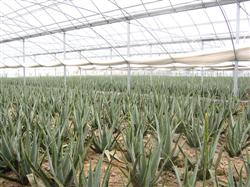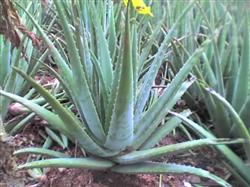How to maintain aloe in summer and autumn

Summer and autumn is an important period for the formation of aloe yield. Field management should focus on the "five prevention", that is, prevention of rigid seedlings, waterlogging, lodging, grass damage and diseases, and conscientiously do a good job in the following work: 1, the combination of work and fertilizer to promote the transformation and upgrading of seedling conditions. Aloe vera needs a large amount of fertilizer and grows well in sandy soil and well ventilated condition. Fertilizer varieties should be organic fertilizer, nitrogen, phosphorus and potassium compound fertilizer should be used, pure nitrogen fertilizer such as urea and ammonium bicarbonate should not be used, and the amount of topdressing fertilizer should be determined according to the quantity of base fertilizer and seedling condition. In general, 1500-2000 kg of human and animal manure, 25 kg of ternary compound fertilizer and 20-25 kg of cake fertilizer were applied in Kaitang hole every 667m2. During the peak growth period, the dosage should be increased appropriately. Extra-root topdressing can be used alternately with 1% urea or 0.5% potassium dihydrogen phosphate or 600 times Huimanfeng or 800 times Gomex. Combined with topdressing, do a good job of loosening soil and weeding in the field, blocking roots and preventing toppling and so on. 2. improve the field water system to prevent waterlogging and waterlogging. Aloe likes drought and fear of waterlogging, waterlogging for a long time, poor root development. From July to September in summer and autumn, when typhoon rainstorms are frequent, it is very easy to form waterlogging. Three ditches and three soil moisture inside and outside the field should be improved to ensure that the rain stops the field dry. 3. Timely prevention and control of diseases. The main diseases of aloe are black spot, this fungal disease is easy to spread in high temperature, continuous rainy weather, especially in plum rain season. At the initial stage of the disease, choose 75% chlorothalonil wettable powder or 40% carbendazim glue suspension 600 times or methyl topiramate 800 times spray. In addition, Mida or Mianling should be used in time to control snails. 4. Sunshade net cover. Aloe likes light and temperature, but the hot sun in midsummer will also inhibit its growth. It should cover 50% of the shade net in time, or insert climbing crops such as kidney beans and towel gourd on the edge of the greenhouse, so as to increase income and shade. Kill two birds with one stone. Click to get more aloe planting techniques click to get more flower planting techniques
- Prev

Sharing: cultivation techniques of aloe in greenhouse
Aloe, also known as oil onion, is a plant of the genus Aloe of Liliaceae, which is native to India. The edible varieties of aloe are Curacao, Muli, China and so on. The main varieties cultivated in the local greenhouse are Curacao, alias Barbados aloe and emerald leaf aloe. The botanical characteristics and cultivation points of aloe are introduced as follows: 1 plant.
- Next

If aloe wants to flourish, it must learn to manage skillfully.
Aloe, a variety of perennial evergreen herbs, is deeply loved by people. Many flower lovers report that the leaves are often withered and yellow in the process of planting aloe, starting from the bottom layer of the leaves, first from the top of the page, and then slowly to the whole leaf surface, affecting the ornamental value. Gourd.
Related
- Fuxing push coffee new agricultural production and marketing class: lack of small-scale processing plants
- Jujube rice field leisure farm deep ploughing Yilan for five years to create a space for organic food and play
- Nongyu Farm-A trial of organic papaya for brave women with advanced technology
- Four points for attention in the prevention and control of diseases and insect pests of edible fungi
- How to add nutrient solution to Edible Fungi
- Is there any good way to control edible fungus mites?
- Open Inoculation Technology of Edible Fungi
- Is there any clever way to use fertilizer for edible fungus in winter?
- What agents are used to kill the pathogens of edible fungi in the mushroom shed?
- Rapid drying of Edible Fungi

